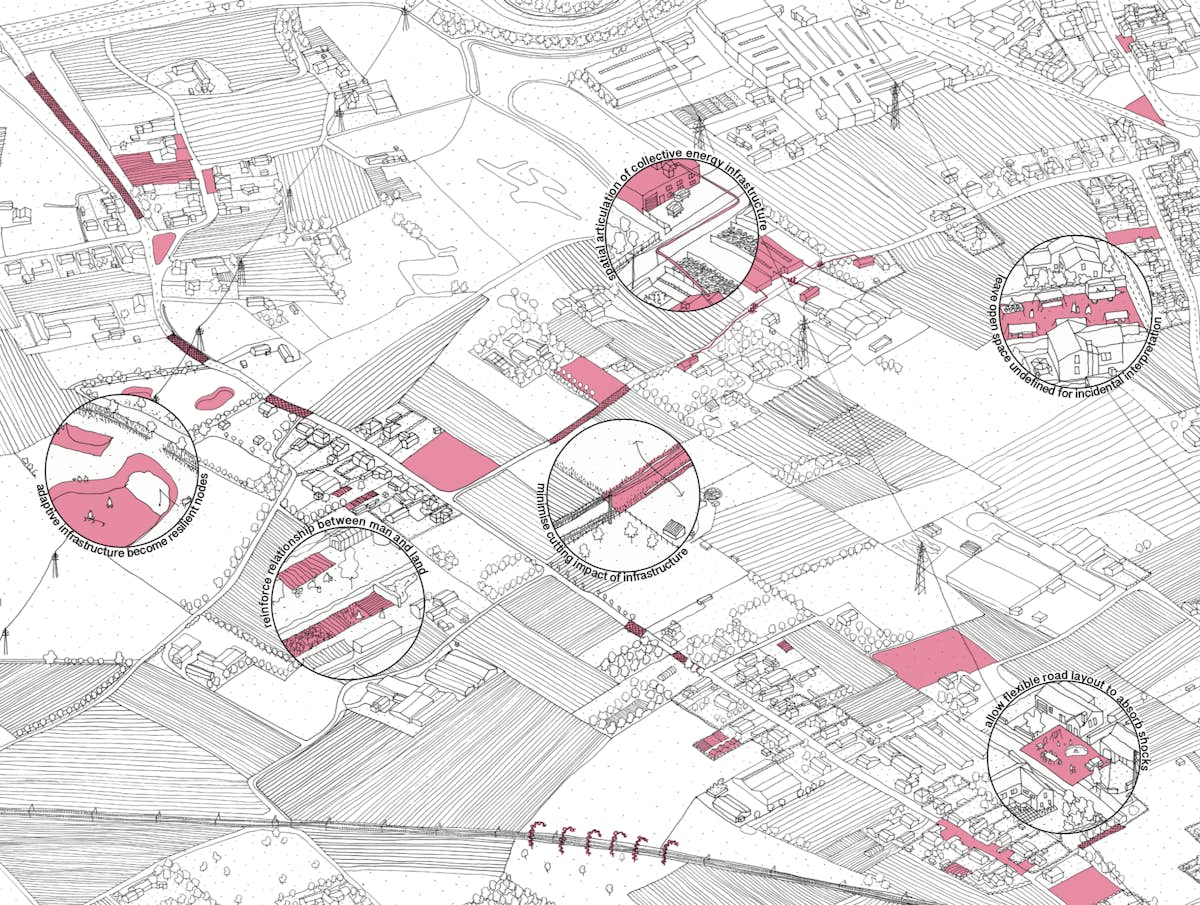Desired spaces in dispersed territories in times of shock as leverage for the future
25/06/2020Sophie LeemansDesired spaces in dispersed territories
in times of shock as leverage for the future
Only recently a number of authors in the fields of architecture and urban design have started to valorise ‘territories of dispersion’, omnipresent in the context of Flanders, as a third condition, beyond the traditional dichotomy of urban - rural. Considering the territory as a network (of opportunities) the implementation of infrastructural networks like roads, railways, electricity, pipelines, sewerage etc. has altered the reciprocal relations between man and land.
The observation of whether or not temporary societal changes in urban environments in times of systemic shock reveals the value of certain vital networks of dispersed territories and the necessity to speculate on what urban design practice could become in reflection of these networks. Times of systemic shock open up possibilities to revaluate these networks and their externalities, channelling the impact of such a shock.
The overall presence of open space in dispersed territories offers the possibility for a resilient approach towards systemic shocks. The locations where infrastructural networks touch upon or cut through other spatial continuities in the territorial field carry potential to become local nodes of intervention.
Through leaving the intended use largely undefined, these desired spaces, in the shape of points, lines, surfaces or volumes become “free havens” for multifunctional use depending on the needs of a specific systemic shock as a way to tackle the firmness of the system when in need of flexibility and resilience. These nodes therefore provide tools that empower citizens to take individual action, detaching themselves from unuasualities of the system.
Sophie Leemans / Architect & PhD researcher / KU Leuven
